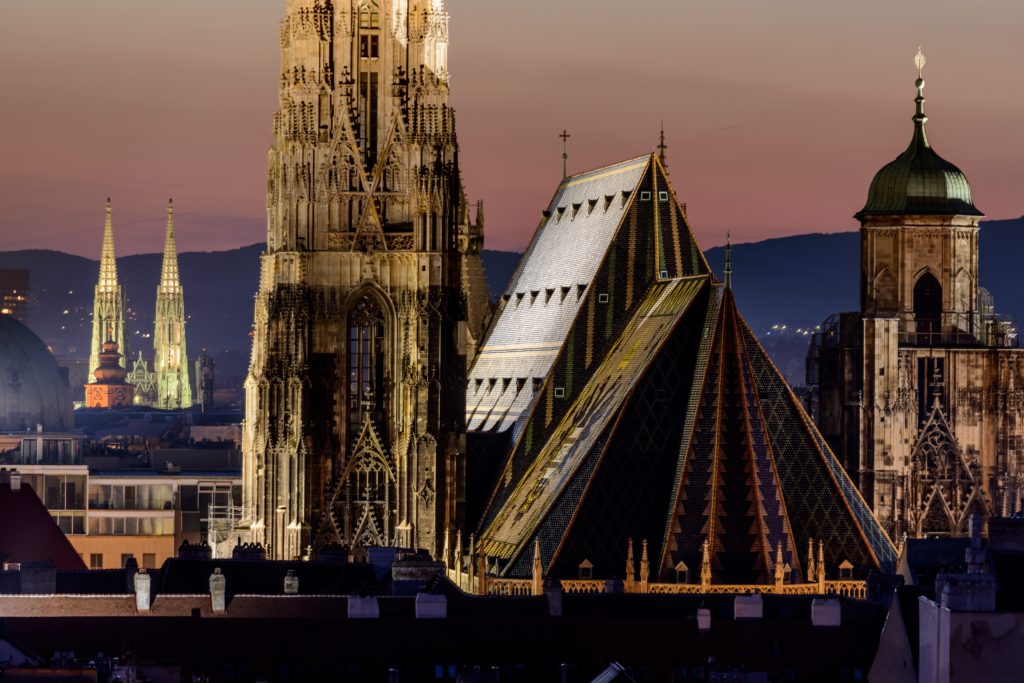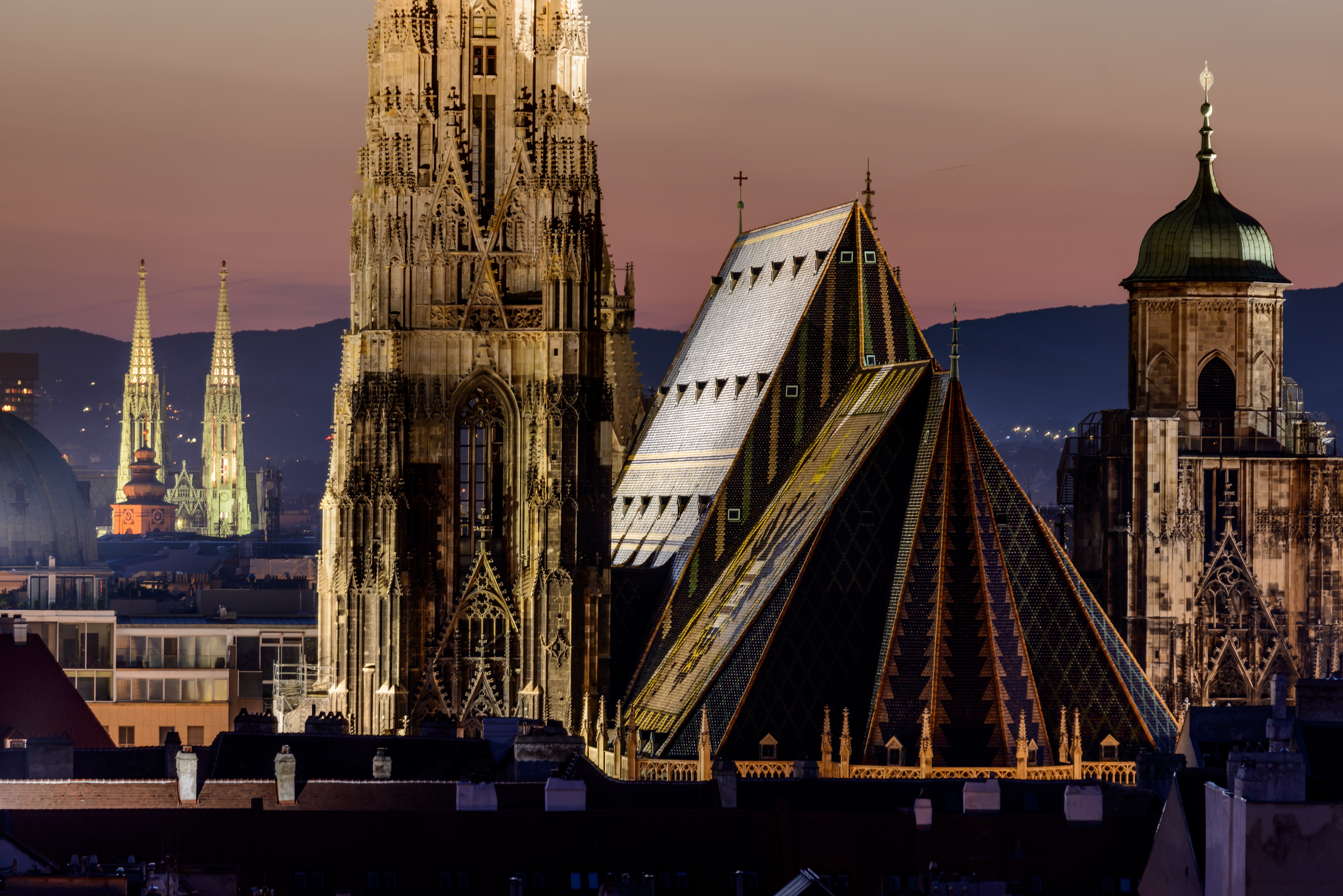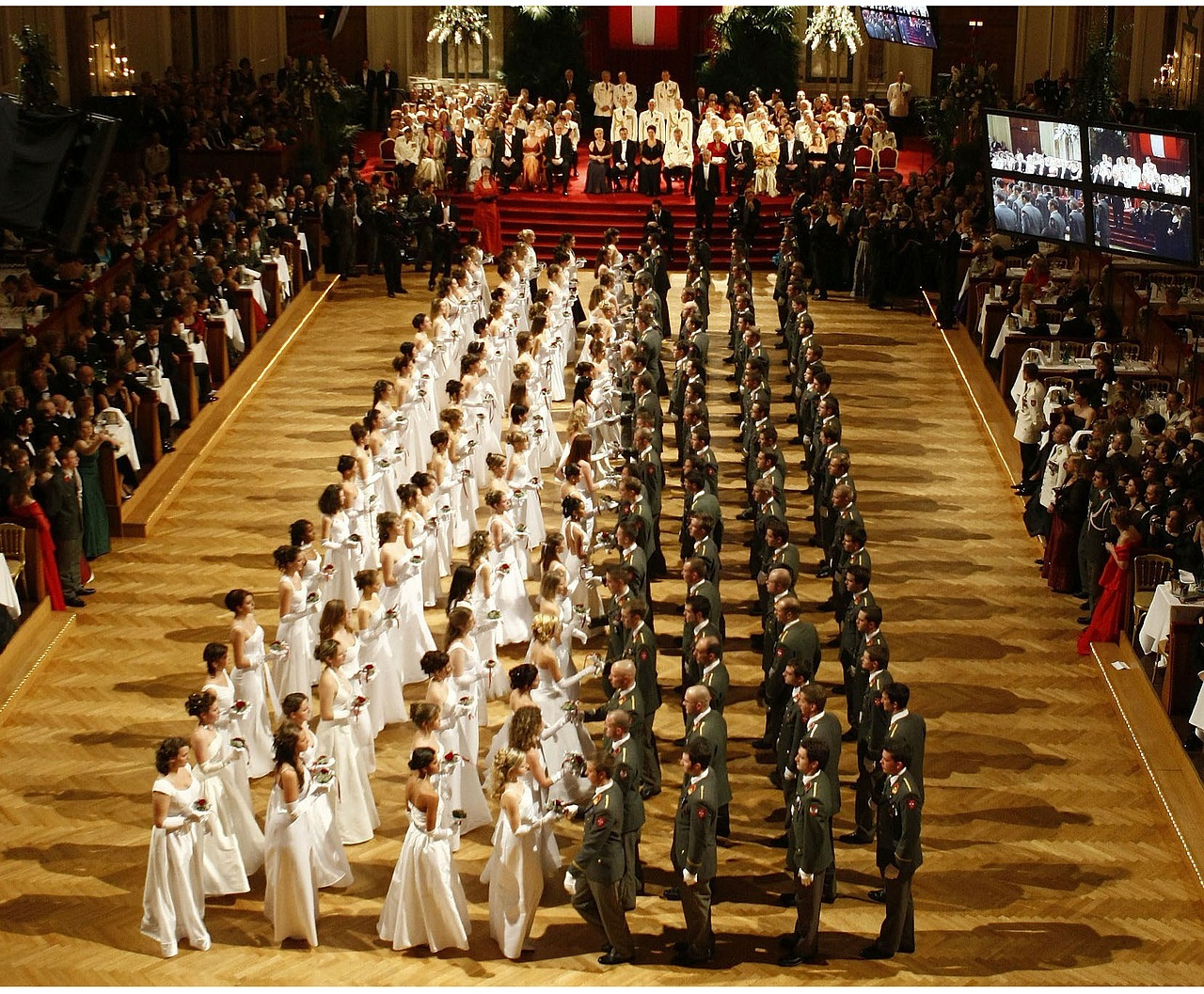Arguably one of the greatest Gothic buildings in Europe is located right in the centre of Vienna: St. Stephen’s Cathedral, or, the Stephansdom, as it is known in Austria.

St. Stephen’s Cathedral is probably the best-known and most important religious building in Austria. It is the mother church of the archdiocese Vienna, the seat of the archbishop, and an overall impressive building. The cathedral is easy to reach with public transport (U1 and U3 station Stephansplatz).
A Brief History of St. Stephen’s
The Romanesque and Gothic form of the cathedral we see today was largely initiated by Duke Rudolf IV and stands on the ruins of two earlier churches, the first a parish church consecrated in 1147.
Most of the cathedral is Gothic, and the oldest remaining, Romanesque parts, the Giant Gate (Riesentor) and the Towers of the Heathens (Heidentuerme) are dating from the 13th century.
In 1359, Duke Rudolph IV of Habsburg, laid the cornerstone of the Gothic nave with its two aisles. The South Tower (nicknamed Steffl -which is also a loving term for the whole church- by the Viennese) was completed in 1433. The tradition of building in the Gothic style ceased in the early 16th century, and the unfinished North Tower was then capped with a makeshift Renaissance spire in 1579.
During the 18th century, the cathedral was decorated with Baroque altarpieces. Since then, the panel of the main altar shows the stoning of its namesake: St. Stephen, the first martyr of Christendom.
Then, in 1711, Austria’s largest bell, the Pummerin was cast by Johann Achammer. It was raised in the South Tower and rung for the first time on 26 January 1712. During the last days of WWII, in 1945, the bell was destroyed as it fell during a fire in the cathedral that had been caused by sparks of burning nearby houses. A new bell, weighing 21 100 kilos was cast from the remains of the original bell in 1951 and has hung in the north tower since October 1957. The Pummerin is well beloved by the Austrians, and in particular by the Viennese, and traditionally rings in every New Year.
Made from limestone, the cathedral is 107 meters (350 ft) long, 40 meters (131 ft) wide, and 136 meters (445 ft) tall (at its highest point). Over the centuries, soot and other forms of air pollution accumulating on the church have given it a black color, but recent restoration projects have again returned the building to its original white.
Visits to St. Stephen’s Cathedral
The Cathedral is open to the public during the following opening hours:
- Monday to Saturday: 6 am – 10 pm
- Sundays and Public Holidays: 7 am – 10 pm
Church services take place daily and have slightly different schedules in the Summer than during the rest of the year. Details can be found here. At any time of the year there is a mass read in English on Saturdays at 7 pm.
Confessions are taken daily from 7 am to 9:45 pm.
Further information on history, guided tours, concerts and special events can be found on the official website.
An Exchange Student’s Experience
“Perhaps the most impressive piece of architecture I witnessed was the Stephansdom Cathedral. This 13th century cathedral, ordained with gargoyles and classic gothic architecture, rivals the likes of Notre Dame. The centuries of grime collected on the limestone outside only seemed to add to the dark, extraordinarily eerie radiance of the building. Walking through this modern city for the first time, not knowing what to expect, and suddenly stumbling upon such a breathtaking monument of this brilliantly gothic architecture, was haunting. I felt humbled to be standing in front of this magnificent monstrosity. I felt what the peasants of medieval Europe must have felt when they were confronted with the awesome power that the Catholic Church seemed to flaunt in those days: absolute fear.
Upon stepping inside, the first thing I noticed was the tall ceiling being held up by several columns which were heavily decorated with elaborate sculptures. These columns were decorated with figures, raised several feet in the air, which looked like Catholic ministers, looking down with a look of rage, ordering any sinners below to kneel and repent. Turning around, I saw above me an enormous organ, with pipes so imposing that it seemed one blow would be enough to send the devil himself running in fear. This cathedral was serious business; it was images like the ones within this Cathedral that gave the Catholic church its reputation as such a feared power in those dark days. Instead of forgiveness and salvation, the feelings I walked away with, after absorbing the building’s aura, were trepidation and the fear of inevitable damnation. I could almost hear the voices of souls begging for forgiveness, at the mercy of the all Holy power of the image of God.”
(by Dorian Pippa, USA)




